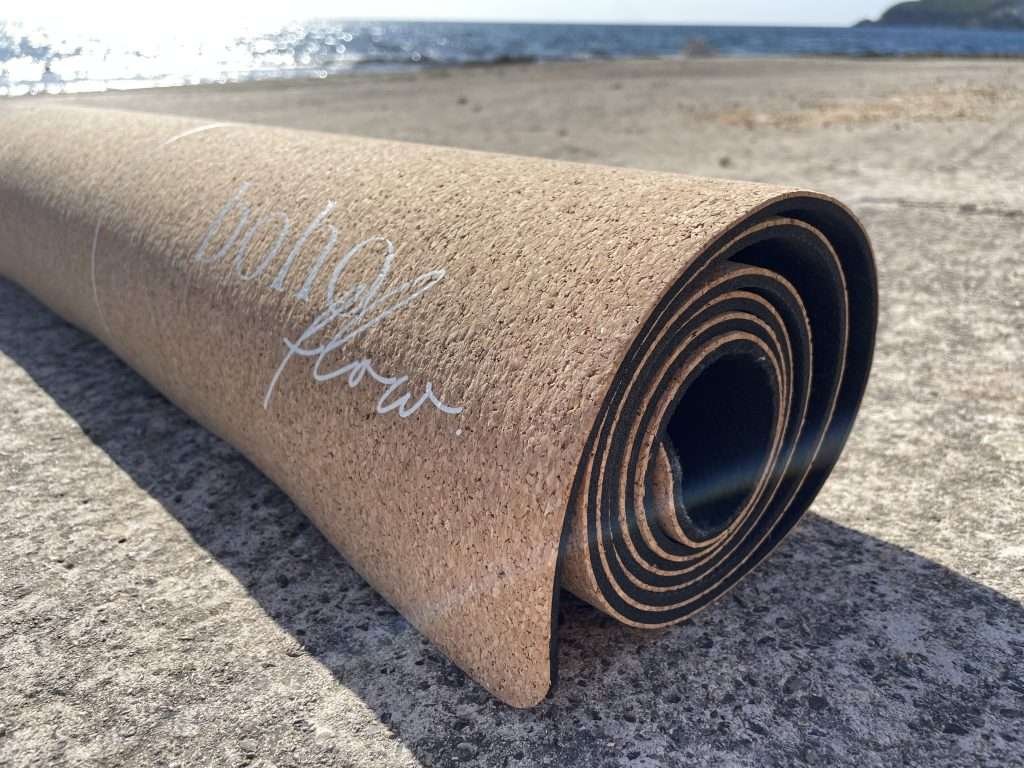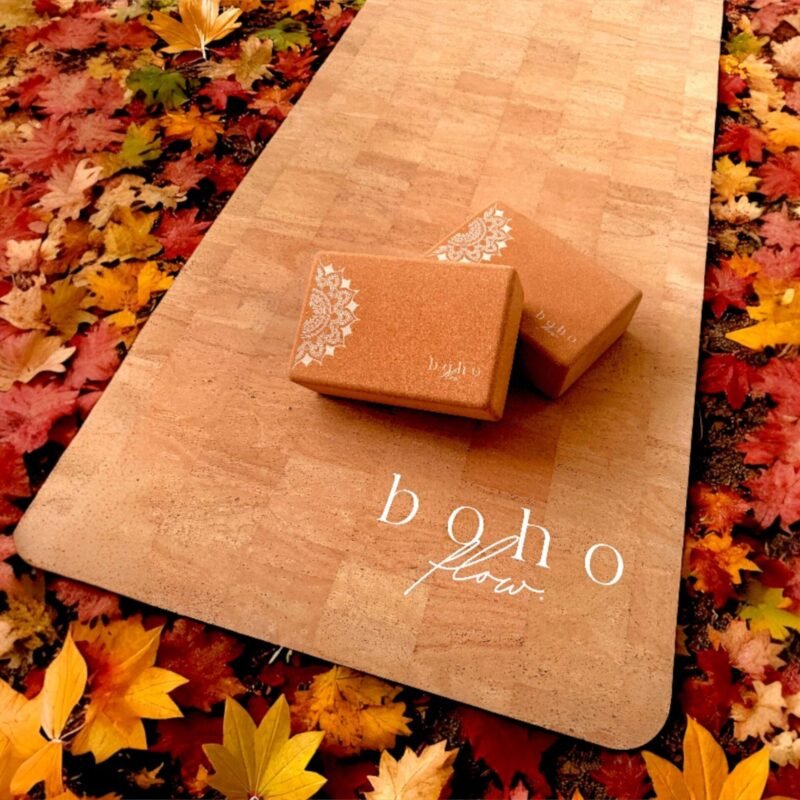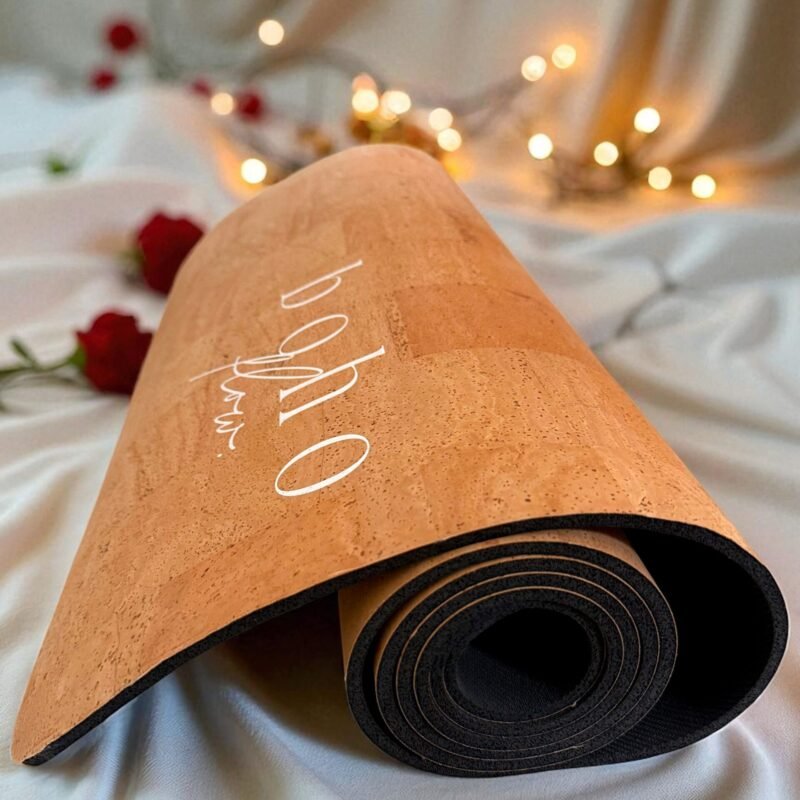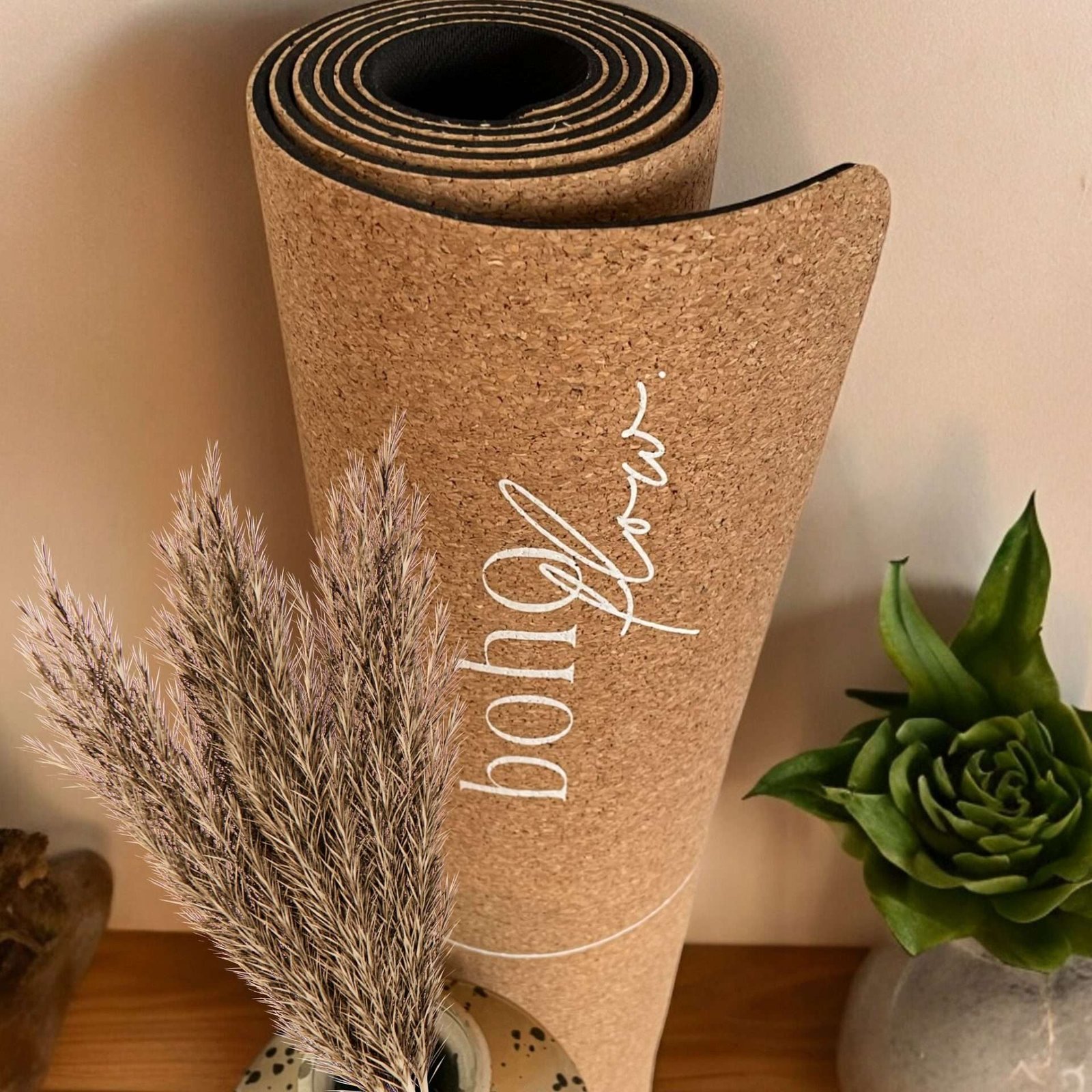
Let’s see what makes a good yoga mat thickness! Your yoga mat is such an important aspect of your practice, but it can be difficult to choose the right one. What materials should it made of? How long and wide should it be? And how thick should a yoga mat be anyway? All of these can influence your practice and can be based on personal preferences, too.
The thickness of your yoga mat can, for example, impact your practice by influencing everything from comfort and stability to portability and durability. We want to lay out some important aspects for you to consider before choosing a good yoga mat thickness for you, your mat and your practice.
Choosing a Good Yoga Mat Thickness
We will give you a few tips below, but these are ultimately influenced by everyone’s personal preferences. If you are new to yoga, it will probably take some experimenting until you find your perfect match, especially, if you do not want to invest in a high quality mat from the start.
1. Type of Yoga Practice
Your preferred style of yoga dictates the level of support and cushioning your mat should provide. For gentle, floor-based practices such as Yin or Restorative yoga, opt for a thicker mat (7mm or more) to cushion your body during longer holds and reclined poses. Conversely, if you’re drawn to dynamic, flowing practices like Vinyasa, Power Yoga, Ashtanga or heated versions of this, a standard thickness mat (around 4-5mm) offers the ideal balance of support and stability for fluid transitions and standing poses.
2. Balance, Stability and Wrist Support
The thickness of your yoga mat will greatly impact your balance and stability. Thicker mats provide more cushioning, making them suitable for sensitive joints and floor poses. However, they can also challenge your stability in standing and balancing poses by offering less firmness and ground-feel. Thinner mats offer greater stability and proprioception, allowing you to root down and find stability more easily in standing and balancing poses.
In addition, if your practice is dynamic and includes many Vinyasas, the thickness of your mat can put a strain on your wrists. Thicker mats may create wrist discomfort over time due to the increased “sponginess” and lack of support. Similar to standing balance poses, a somewhat thinner mat can provide better stability and support for your wrists.
3. Material Will Impact the Yoga Mat Thickness
A good yoga mat thickness can also be impacted by the material of the mat, which also influences your mat’s durability and eco-friendliness. TPE (Thermoplastic Elastomer) mats are known for their spongier texture, providing extra cushioning for joint support. However, they have some drawbacks, too. Read more about TPE vs. natural rubber mats HERE. Natural rubber mats, on the other hand, are denser and firmer, offering superior stability and durability for dynamic practices. PVC mats tend to be somewhat softer, but offer less grip and are not environmentally friendly. Cork mats offer great, non slip grip in all conditions and are eco-friendly. Cork mats are usually backed with TPE or natural rubber. You can read more about cork mats HERE.
4. Portability and Convenience
For yogis on the go, the portability of your mat is, of course, important, too. A good yoga mat thickness can also impact the weight of your mat. If you practice in a studio regularly or like to take your mat on travels, you may want to consider thinner – and therefore lighter – versions. Travel mats are usually around very thin with approximately 1.5mm, but a standard mat of 3-5mm offers a great compromise. Again, the yoga mat material can impact the weight of your mat. Eco-friendly natural rubber is more heavy duty, whereas synthetic materials as PVC and TPE are more lightweight.
5. Price Range and Budget
While it’s essential to prioritize quality and functionality when choosing a yoga mat, your budget can also play a significant role in the decision-making process. Yoga mats come in a wide range of prices, from budget options to high-end, premium mats.
PVC, TPE and other types of synthetic mats tend to be significantly cheaper. While they can provide a good yoga mat thickness, they may lack stability, durability, and eco-friendliness. Natural mat materials such as cork, jute, and natural rubber tend to be pricier, more heavy duty, and sometimes more weighty. We have given a breakdown of the 5 most common mat materials HERE.

Similarly, travel mats tend to be a little cheaper than standard thickness yoga mats. However, this significantly depends on the materials, too. Consider how much you’re willing to invest in your yoga practice and weigh it against the features and materials that matter most to you. Ultimately, finding the right balance between quality and affordability ensures that you get the most value out of your investment in a yoga mat that serves you well for years to come.
We have rolled all our expertise into our Boho Flow signature Cork and Rubber Yoga Mat with Alignment Lines. At a thickness of 4.5mm, it strikes the perfect balance to provide you with stability in balance poses, protect your wrists, and still offer some cushion for comfort. Shop yours HERE.
Standard Mat Thicknesses
Now that we’ve explored the key aspects to consider and the various materials available, let’s break down the standard thicknesses of yoga mats:
- Travel Yoga Mats: Typically around 1.5mm thick, travel yoga mats offer lightweight portability without sacrificing too much cushioning. They’re perfect for yogis on the move who need a mat that can easily be carried, or stashed in a suitcase or backpack.
- Standard Thickness (4-5mm): Standard yoga mats strike a balance between comfort and stability, making them suitable for a wide range of yoga styles and practitioners. They provide adequate cushioning for joint support while still offering firmness and ground-feel for balance poses and transitions. Again, the stability is also very dependent on the material. 4mm of TPE tend to be much spongier than 4mm of natural rubber, for example.
- Thick Mats (7mm and above): Thick yoga mats offer luxurious cushioning and support, making them ideal for gentle, floor-based practices like Yin or Restorative yoga. While they provide excellent comfort for longer holds, they may challenge your stability in standing poses and require more effort to transport due to their bulkier size. Bear in mind that materials like natural rubber are quite weighty. A 7mm or more yoga mat of natural rubber will also be fairly heavy.
Extra thick yoga mats are probably the best choice if you wish to use these mainly at home and will not need to carry them around as much. Travel mats make the most sense for that – travel – as they can be too thin for a regular practice. A standard thickness of anywhere between 3-5 mm, depending on material, is usually a good yoga mat thickness for anyone looking for a good balance.

With yoga teachers of over a decade of experience, we usually recommend a standard thickness of around 4-5 mm, with natural, high quality and eco-friendly materials, such as our Boho Flow Cork and Rubber Mat.
Ultimately, the decision of how thick your yoga mat should be will be a personal one. It can depend heavily on the type of yoga you practice, your preference of yoga mat materials, and possibly what your yoga mat budget is.









